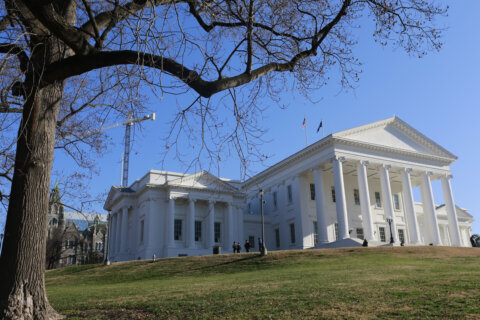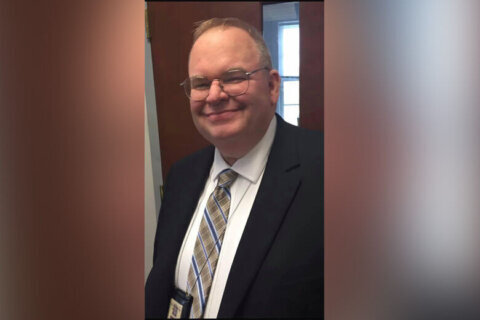WASHINGTON — The heroin and opioid epidemic in Virginia has now reached unprecedented levels, and the state is taking action to make a lifesaving drug more accessible.
The state health commissioner, Dr. Marissa Levine, announced Monday that she has issued a standing order for naloxone, a drug that counteracts the effects of an opioid overdose. Now, any Virginian can walk into a pharmacy and ask for naloxone without a prescription.
Advocates applaud the state’s decision, but some say it needs to take additional steps to curb this crisis, which is expected to take the lives of more than 1,000 Virginians this year alone.
Naloxone, which has the brand name of Narcan, can reverse an opioid overdose, and it has been used to save countless lives. Now that the drug is available without a prescription, officials hope more people will purchase the drug for themselves or loved ones who have substance dependency.
But Ginny Lovitt, whose brother died of a heroin overdose, said the stigma is hard to overcome.
“People are afraid to go to the pharmacy counter and ask for this medication in public because that would constitute admitting that they have a problem with addiction or that their loved one does,” she said.
After Lovitt’s brother, Chris Atwood, died in 2013, she started a foundation in his name to educate the public and provide resources. She also became a certified instructor for REVIVE!, Virginia’s opioid and naloxone education program, and teaches how to administer naloxone. Since the training began in 2015, her class has trained more than 200 people and saved at least 10 lives.
While Virginia’s standing order makes it easier for people to buy naloxone, Maryland and dozens of other states go one step further.
“One of the main ways that Virginia is a little behind, compared to Maryland, is we don’t currently allow REVIVE! opioid overdose instructors to dispense naloxone to their class participants,” Lovitt said. “After the class, someone needs to go out and get it from the pharmacy. Unfortunately, there are a lot of reasons — logistical, financial, stigma-related — where people can’t get it from the pharmacy, or they choose not to. So a lot of people are getting trained and not getting the medication afterwards.”
Naloxone’s average cost is about $120, Virginia officials said.
Treatment
There’s also the issue of treatment itself. There’s not enough affordable treatment centers or beds to meet the skyrocketing demand, experts said. And though naloxone saves lives, it doesn’t put people on a path to recovery.
“What we need is a lot more availability to treatment because otherwise, individuals who are saved from overdosing are going to continue to use the drugs and may overdose again. So we’re just forestalling the problem instead of actually trying to address it,” said Warren Bickel, director of the Addiction Recovery Research Center at the Virginia Tech Carilion Research Institute.
Bickel emphasized that addiction is a chronic disorder and that long-term treatment should be the top priority.
“Imagine the outcomes that you would see if you took other chronic disorders, like type 2 diabetes or asthma, and just treated it for a short period of time,” Bickel said. “It would be nothing but a medical disaster waiting to happen. Short-term treatment for individuals with opioid dependence, addicted to heroin or prescription opioids, is better than nothing. Bbut it’s not really going to address the problem.”
Bickel also supports increasing medication-assisted treatment with drugs like methadone and Suboxone, which help to ease withdraw symptoms and opioid cravings.
“There is unmet need for individuals to get that treatment,” he said. “Suboxone is very expensive, but methadone is not. So it requires some sort of support because many people would not be able to afford some of these treatments and, therefore, will just continue doing what they got to do to stay on the street.”
Scope of the epidemic
More people are dying from opioid overdoses than vehicle crashes in Virginia.
And officials project that by the end of 2016, a record of more than 1,000 Virginians will die from an opioid overdose, an increase of 77 percent compared with five years ago. Fatal overdoses in the first six months of this year are up 35 percent compared with the same period last year.
The potency of these drugs is unlike anything law enforcement officials have seen before, and it’s not just pure heroin that they are concerned about.
New powerful synthetic opioids that are manufactured in labs and often mixed with heroin increase the risk of death tremendously.
One of the most deadly synthetic drugs is fentanyl, which is about 50 times more potent than heroin. It’s so dangerous that a person could die from just touching fentanyl with their fingers.
Officials are also seeing variations of fentanyl flood the market like carfentanil, an elephant tranquilizer that’s 100 times more potent than fentanyl and 10,000 times more powerful than morphine. Dr. Levine said it has shown up in Fairfax County in the past year.






